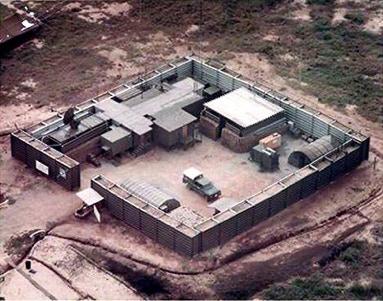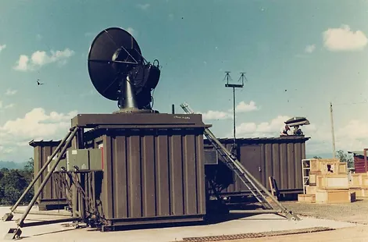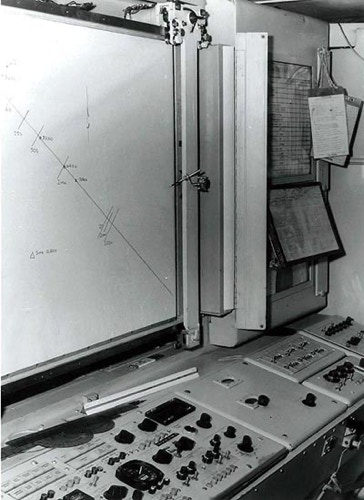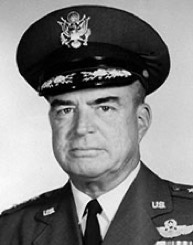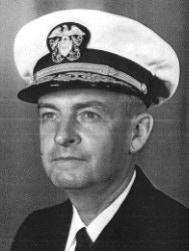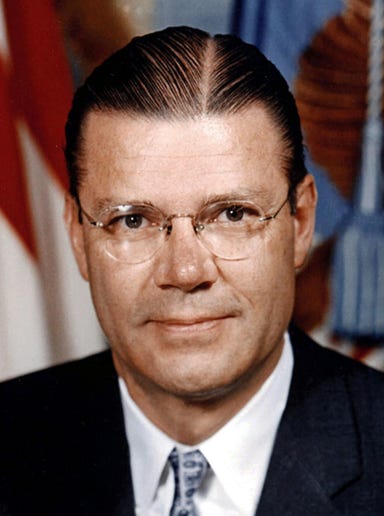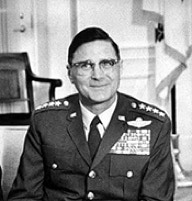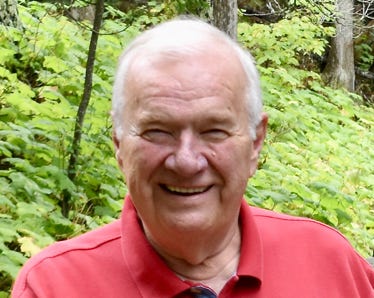DUTY, HONOR, COURAGE, RESILIANCE
Talking Proud: Service & Sacrifice
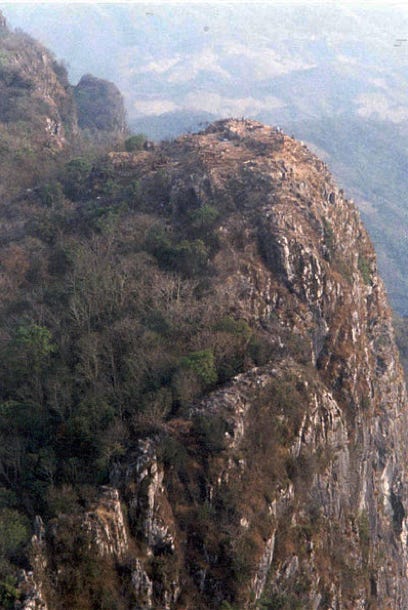
Lima Site 85, Laos: Exceptional Courage Against Impossible Odds
Radar Bombing System
The most significant shortfall of TACAN, including the one at LS-85, was that it could not provide precise bomb release information, direction, or guidance, especially in foul weather. Ultimately, the pilot depended heavily on his eyes and experience. The USAF needed something far more accurate.
Herman Wolk, writing “USAF Plans and Policies R&D for Southeast Asia in June 1969,” underscored this point,
“No greater R&D challenge faced the Air Force in Southeast Asia than that involving night and all-weather operations. When it found itself engaged in major air activities in Vietnam and Laos in early 1965, the Air Force had neither adequate equipment nor devices to conduct such operations effectively. The result was that the enemy enjoyed relative freedom of movement at night and during bad weather, at least up to mid-1966.”
There was a bombing accuracy system in the RVN and Thailand. It was the MSQ-77 automatic tracking radar bombing control system for command guidance of aircraft. The program was known as "Combat Skyspot." It was first employed in March 1966.
This photo shows an MSQ-77 Combat Skyspot station at Dong Ha, RVN. The problem was none of the Skyspot systems could control Rolling Thunder missions deep into NVN. Furthermore, Skyspot required a lot of space.
John T. Correll wrote that the USAF needed to “put a radar where it would have an unobstructed line of sight to the airspace over Hanoi. Also, the target area had to be within 175 miles of the radar, which was the system's effective range.”
The LS-85 was the obvious choice. However, the system could not be as large as the MSQ-77. It had to be lightweight, air-transportable, and fit on the Phathi mountaintop.
In his book, One Day Too Long: Top Secret Site 85 and the Bombing of North Vietnam, Timothy Castle commented the idea to "place a ground-directed radar bombing facility at Site 85 evolved from a February 7, 1965 White House staff memorandum, which urged President Lyndon B. Johnson to undertake a 'policy of sustained reprisal against North Vietnam, in which air and naval action against the North justified by and related to the whole Viet Cong campaign of violence and terror in the South.'"
W. Howard Plunkett, writing "Radar bombing during rolling thunder--Part II: Combat Lancer and Commando Club," said the USAF and JCS began work to establish a Combat Skyspot ground-directed radar station in northern Laos as early as November 1966.
The USAF contracted The Reeves Instrument Corporation “to develop a mobile, lightweight, air-transportable version of the MSQ-77 Radar Bombing Control System.” It would be called the TSQ-81.
A program was developed to send USAF personnel to LS-85 to operate the system. Keep in mind that US military people were not to be in Laos.
This program, called “Heavy Green,” began in the summer of 1966. It was highly secret and handled by USAF Special Plans in the Pentagon.
The fundamental difference between the TSQ-81 and TACAN was that the TSQ-81 had an active radar tied to a computer-controlled command guidance system.
The first TSQ-81 was installed at Nakhon Phanom RTAFB (NKP) with the codename "Bromo." It is shown here.
USAF technicians would use the system to guide the aircraft to their bombing point. Global Security described it this way:
"These (plotting board) maps could precisely determine where an aircraft was in relation to a chosen target. The computer continuously calculated the altitude, airspeed, wind drift correction, and ground elevation changes, using the ballistics of the bombs that were being carried by the aircraft.
“The plotting board/computer operators would tell the aircrew to make minor corrections in their flight path, and then the exact moment when to drop their bombs, to ensure that the bombs would be on target."
In his book, Honored and Betrayed, Major General Richard Secord, USAF (Ret.) said:
"Attacking planes would simply follow the ground system's voice commands to weapons release:
"'Ready, ready, now!' and all the pilots would drop their bombs together."
How did the TSQ-81 operators know where the targets were? Finding targets was a difficult challenge in this war. PACAF did a report on Combat Skyspot, published in August 1967. Targets were provided by Forward Air Controllers (FAC), by fighter aircraft flying over a target, from Direct Air Support Centers, preassigned targets, friendly forces on the ground, flight plans. After a while the Skyspot operators were able to build their own target folders.
The USAF selected LS-85 for this job. Let’s look at the approval process. It will give you a sense of the importance of Heavy Green.
In November 1966, the commander-in-chief of Pacific Air Forces (CINCPACAF), General Hunter Harris, asked for "authorization to develop a concept and plan for installation of an MSQ-77 in northern Laos and authorization to discuss this matter with Ambassador Sullivan."
The commander-in-chief Pacific (CINCPAC), Admiral U.S. Grant Sharp, "authorized CINCPACAF to proceed with plans as requested and directed that American Embassy Vientiane be provided with detailed requirements."
Ambassador Sullivan was pessimistic about the plan. He felt the RLG would not accept such a system that would guide US bombers to NVN targets from a facility in Laos. He also felt the RLG would not want “security obligations beyond their means." I will add that the RLG was ambivalent about the NVA’s use of the Ho Chi Minh Trail through Laos and was not focused on bombing Hanoi and its near environs. Its top priority was NVA and Pathet Lao actions within Laos to overthrow the government. So there was a disconnect.
General Harris felt the need to install a TSQ-81 at LS-85 was urgent. He met with Sullivan and found him pessimistic about the idea. In February 1967, Admiral Sharp informed General Earle Wheeler, Chairman of the Joint Chiefs of Staff (CJCS), of Sullivan's concerns.
On April 25, 1967, the JCS proposed to Secretary of Defense Robert McNamara that an MSQ-77-type radar be installed at LS-85. The JCS reasoned it would provide bombing guidance to the Rolling Thunder campaign during poor weather. McNamara consulted with President LBJ, and LBJ approved the proposal. So, Sullivan lost this part of his battle.
General William Momyer, Commander 7th AF, seemed in favor, asserting the system would help bomb targets in northern NVN, such as "marshaling yards, military barracks, the Thai Nguyen mill, depots, and transshipment points.” But Momyer also noted several political problems. The main problem was “to direct air strikes over North Vietnam from Laos would appear an escalation of the war, in that Laos could be viewed as a base of operations for attacks against North Vietnam.” That was also one of Sullivan’s concerns.
Momeyer suggested a fix: Convey instructions from the TSQ-81 through a relay aircraft to the strike aircraft. This would provide the LS-85 site with cover.
Sullivan briefed Laotian PM Souvanna in July 1967. Sullivan assured the prime minister that all USAF markings would be removed from the equipment, detonators would permit immediate destruction in case of imminent danger, personnel would be under civilian cover, maximum measures would be taken to camouflage against detection from the air, and electronic camouflage would be undertaken by scrambled transmission to relay aircraft over Gulf of Tonkin.
Souvanna agreed. The two developed “plausible deniability” stories should the system's secrecy be revealed.
Sullivan said he would handle the coordination in-country. He told the State Department, "It should be made clear that a compromise might result in a requirement to remove the installation if it, and the RLG, are sufficiently embarrassed." Secretary of State Dean Rusk informed JCS it could proceed with the TSQ-81 installation at LS-85.
General Harris came to Thailand to brief senior officials. Major Richard Secord, USAF, and James W. “Bill” Lair were at the meeting.
On the surface, Secord was assigned to the Office of the Air Attaché in the Vientiane Embassy. However, he was the CIA Air Operations Officer at Udorn. Bill Lair was the paramilitary chief at CIA's Chief of Station (COS) in Vientiane.
Lair had issues. He was concerned about site security. He opined that Vang Pao could hold the site if attacked but would need help to sustain an all-out offensive. Lair was also worried about the site's extra load on the Hmong.
Secord’s rendition of this meeting was,
"The paramilitary Chief (Lair) stated clearly that we did not have enough friendly ground forces, mainly Muong (Hmong) irregulars under General Vang Pao, to defend LS-85 against a main force NVA attack, which would surely come."
Lair pressed for reliable and consistent USAF close air support (CAS). Secord said:
"We were assured that USAF TACAIR (tactical air) would be provided."
The bottom line in the summer of 1967, before the system was even installed, was that the ambassador and CIA people in the embassy and at Udorn had misgivings about their ability to protect the site and expressed those misgivings to General Harris. Harris assured them of air support in the event of an attack. In short, the Air Force really wanted this TSQ-81 at LS-85.
The embassy, mainly Major Secord, and the CIA personnel working there oversaw the installation, operation, and security of the TSQ-81.
Go to next chapter: Sheep Dipping
Click to zoom graphic-photo
